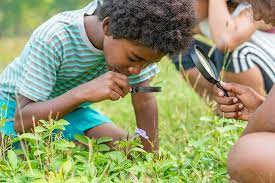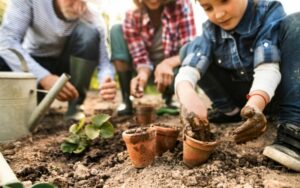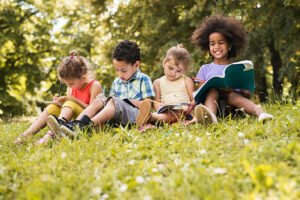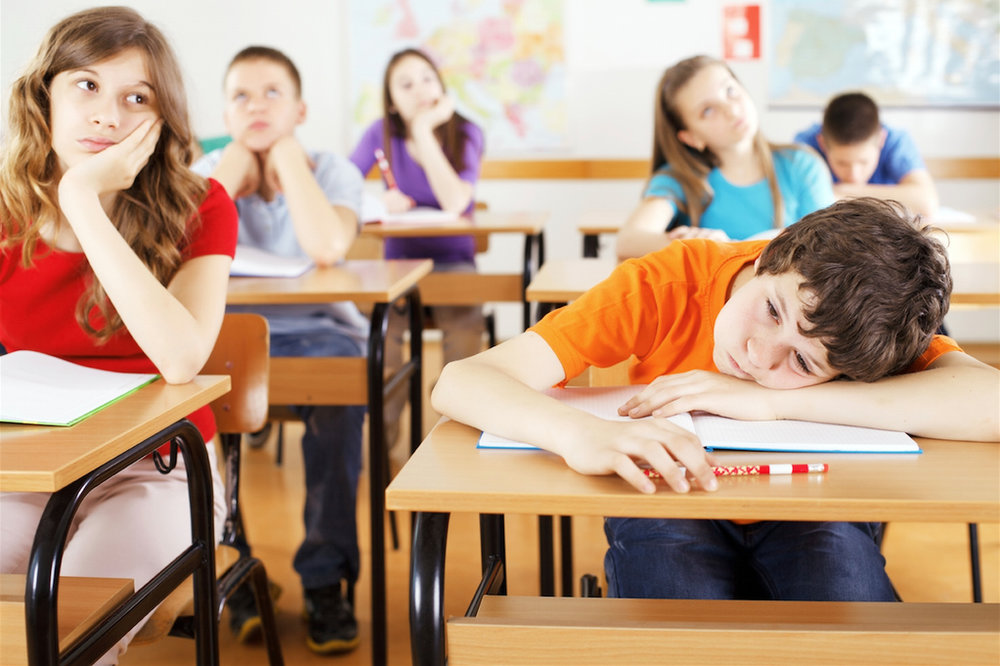The journey of education is as diverse as the students embarking on it. Our youth, each unique in their own way, come equipped with distinct styles and modalities of learning. It’s time we celebrated and embraced the diversity in our education. Let’s dive into the different learning styles and how we can tailor education to meet the needs of every child. Education is not one-size-fits-all, and the key lies in understanding, appreciating, and accommodating these variations. Whether in public, private, charter, or homeschool- the focus is on our youth. Because remember, we are in the equipping business.
The Multitude of Learning Styles
Visual Learners

Characteristics: Visual learners absorb information most effectively through images, diagrams, charts, and visual aids. They often possess a strong sense of spatial awareness.
Preferred Modalities: Visual learners thrive in settings where information is presented visually. They excel at watching videos, using mind maps, and drawing to grasp and remember concepts.
Learning Environments: Incorporating visual aids, infographics, and interactive whiteboards in the classroom can greatly benefit visual learners.
Auditory Learners

Characteristics: Auditory learners grasp information best through listening and verbal communication. They often have a keen sense of rhythm and enjoy music.
Preferred Modalities: Audiobooks, lectures, discussions, and podcasts resonate with auditory learners. They excel at memorization through repetition and auditory cues.
Learning Environments: Engage auditory learners through classroom discussions, oral presentations, and incorporating audio materials into lessons.
Kinesthetic Learners

Characteristics: Kinesthetic learners are hands-on, tactile learners. They thrive on physical experiences and learn best through touch and movement.
Preferred Modalities: Hands-on experiments, role-play, interactive activities, and field trips resonate with kinesthetic learners. They learn by doing.
Learning Environments: Create opportunities for movement and practical experience in the classroom. Incorporate hands-on learning materials and outdoor activities.
Reading/Writing Learners

Characteristics: These learners have a strong preference for reading and writing as their primary mode of absorbing information. They excel in written expression.
Preferred Modalities: Reading books, taking notes, and writing essays or journals are ideal for reading/writing learners. They process information best when they can write it down.
Learning Environments: Encourage reading and writing through assignments, book clubs, and journaling. Provide ample reading materials and writing exercises.
The Art of Customized Education
The Fundamentals for All
Regardless of a child’s primary learning style, certain fundamentals are essential for every youth:
- Repetition: Repetition is the mother of skill. Encourage repetition to reinforce learning and memory retention.
- Skills-Based Learning: Practical skills are invaluable for life. Skills-based education promotes hands-on experiences and problem-solving.
- Hands-On Experiences: Learning by doing is a powerful way to grasp complex concepts and develop critical thinking.
- Conversations and Support: Encourage open dialogues and provide the necessary support to nurture curiosity and a love for learning.
- Movement: Physical activity and movement help stimulate the brain and keep young minds engaged.
- Practical and Relevant Experiences: Real-world applications of knowledge make learning meaningful and exciting.
- Trying New and Challenging Things: Encourage taking risks and facing challenges head-on. These experiences boost problem-solving abilities.
- Asking Questions and Critical Thinking: Fostering inquisitiveness and the ability to think critically empowers students to navigate the world effectively.
The Personalized Approach
Understanding the diverse learning styles of your students or child allows for a personalized educational experience. Here’s how educators and parents can tailor education to meet individual needs:
- Assessment: Yes I know there is a whole spectrum of thoughts regarding assessments. But let’s keep the main thing the main thing, This is a great tool for identifying a child’s primary learning style through assessments and observations. From here, you can now equip appropriately how to set up your child for success.
- Curriculum Adaptation: Adjust teaching methods and materials to align with a child’s preferred learning style. For example, if a student is a visual learner, use visual aids to reinforce concepts.
- Inclusive Learning: Create an environment where all learning styles are valued and catered to. Encourage collaboration and peer-to-peer learning.
- Variety in Instruction: Incorporate a mix of teaching methods to accommodate different learning styles within a classroom. This ensures no one is left behind. It also helps set up our youth for later in life when there may be a multitude of environments they will need to adapt to.
- Flexibility: Recognize that a child’s learning style may evolve over time. Be flexible and adapt teaching methods as needed.
- Empower Choice: Allow students to choose how they want to approach assignments or projects. Providing choices empowers them to take ownership of their learning.
Some Ways to Keep the Education System Innovative for Our Youth
1. Experiential Learning: Encourage experiential learning opportunities, such as internships, apprenticeships, and project-based learning. These experiences offer practical, real-world applications of knowledge.
2. Multisensory Learning: Incorporate multisensory elements into lessons to engage various learning styles simultaneously. For instance, a history lesson can include visual aids, storytelling, and hands-on artifacts.
3. Customized Learning Plans: Develop personalized learning plans for each student, taking into account their unique learning style, strengths, and areas for improvement.
4. Training: Equip educators and parents with the skills and knowledge to recognize and accommodate diverse learning styles in their classrooms.
5. Collaborative Learning: Foster collaborative learning environments where students can learn from each other, sharing their unique strengths and perspectives.
6. Educational Technology: Leverage technology to offer customized learning experiences, such as adaptive learning platforms and interactive simulations.
7. Community Engagement: Involve the local community in education by offering mentorship programs, workshops, and real-world learning opportunities.
8. Holistic Education: Emphasize the importance of not just academic knowledge but also life skills, emotional intelligence, and character development.
Equipping Children for Adulthood through Hands-On Skills-Based Learning
Education is the cornerstone of preparing children for adulthood, and it’s essential that we equip them with the skills and knowledge they need to succeed in various aspects of life, including relationships, personal growth, and the workforce. Different learning styles and hands-on, skills-based learning play a pivotal role in this process.
1. Personal Growth and Development:
Visual Learners: Visual learners often have strong observational skills and can readily spot patterns and details in their surroundings. They are more likely to excel in careers that require attention to detail, such as graphic design, architecture, or even medical imaging. In personal relationships, their ability to pick up on non-verbal cues can make them empathetic and sensitive partners.
Auditory Learners: Auditory learners tend to excel in careers that involve communication and listening skills, such as counseling, public speaking, or music. In personal relationships, their active listening abilities can lead to more meaningful and empathetic connections.
Kinesthetic Learners: Kinesthetic learners thrive in hands-on careers, like carpentry, cooking, or athletics. They often have a strong sense of body awareness, which can lead to better physical health and a deeper appreciation for physical activities, enhancing their personal lives.
Reading/Writing Learners: Reading/writing learners often have excellent communication and written expression skills. They may excel in careers that require written communication, like journalism, content creation, or law. These skills also make them effective communicators in personal relationships.
Hands-On, Skills-Based Learning: Skills-based learning, which emphasizes practical, hands-on experiences, equips children with essential life skills. These skills include problem-solving, critical thinking, decision-making, adaptability, and resilience, all of which are crucial for personal growth and development. Learning to cook, manage finances, or repair a car not only enhances their practical knowledge but also fosters self-reliance and independence.
2. Relationships:
Different Learning Styles: Understanding and respecting the diverse learning styles of others can enhance communication and empathy in relationships. For example, a visual learner may better understand their partner’s need for visual cues and express affection through visual means, such as art or thoughtful gestures. Meanwhile, an auditory learner may appreciate deep conversations and expressions of love through verbal affirmation.
Hands-On, Skills-Based Learning: Learning practical life skills through hands-on experiences can also strengthen relationships. For instance, cooking a meal together can be a bonding experience that fosters teamwork and communication. Learning financial management can lead to more responsible financial decisions as a couple. Additionally, the problem-solving skills acquired through skills-based learning can help couples navigate challenges effectively.
3. Workforce Readiness:
Different Learning Styles: In the workforce, individuals who understand their learning style can leverage it to excel in their chosen careers. Visual learners may excel in roles that require attention to detail, such as data analysis or graphic design. Auditory learners may thrive in sales or marketing positions where effective communication is key. Kinesthetic learners may find fulfillment in hands-on professions like construction or healthcare.
Hands-On, Skills-Based Learning: Skills-based learning provides practical and transferable skills that are highly valued in the workforce. It equips individuals with the ability to adapt to new challenges, think critically, and solve problems effectively. For example, a young adult who has learned hands-on car maintenance may save money on repairs and have a more reliable mode of transportation for work.
Different learning styles and hands-on, skills-based learning are instrumental in preparing children for adulthood. They not only help individuals excel in their chosen careers but also enhance personal growth, foster meaningful relationships, and empower young adults to navigate the complexities of life with confidence and resilience.
As educators and parents, recognizing and supporting these diverse learning styles and providing opportunities for hands-on, skills-based learning can set children on a path to becoming well-rounded and capable adults, ready to face the challenges and opportunities that lie ahead. Ultimately, it’s about nurturing their unique potential and preparing them to thrive in a world that values both diversity and practical competence.
Micro Journal Questions/Reflections:
- Personal Learning Style Reflection: Take a moment to reflect on your own learning style. How do you prefer to absorb new information? How can you leverage this knowledge in your career or personal life to enhance your learning experiences?
- Skill Enhancement: Identify a practical skill you’d like to acquire or improve. How can you incorporate hands-on, skills-based learning to achieve this goal? What steps can you take to get started?
- Understanding Loved Ones: Consider the learning styles of your family members or close friends. How can you better understand and support their unique styles of learning? Share this insight with them for more effective communication.
- Applying Learning Styles at Work: How can you leverage your preferred learning style to excel in your current job or career? Are there new skills you’d like to acquire that align with your learning style and professional goals?
- Personal Growth: Reflect on your personal growth journey. How have different learning experiences shaped your character and capabilities? What aspects of hands-on learning have been particularly transformative for you?
Macro Journal Questions/Reflections for Families and Kids:
- Family Learning Styles Discussion: Sit down with your family and discuss each member’s learning style. How can you create a supportive environment that caters to everyone’s preferences? What activities can you engage in together that align with these styles?
- Practical Life Skills: Identify essential life skills that each family member can develop. How can you incorporate hands-on, skills-based learning into your daily routines to nurture these skills? Create a family action plan.
- Encouraging Curiosity: How can you foster a love for learning in your children by recognizing and supporting their individual learning styles? Are there books, resources, or experiences that cater to each child’s preferences?
- Work and Career Goals: For older children, discuss their career aspirations and how understanding their learning style can benefit them in their chosen field. Encourage them to explore internships or experiences that align with their strengths.
- Family Project: Choose a family project that allows each member to contribute based on their learning style. This could be a home improvement project, a creative endeavor, or a community service initiative. How can you apply your unique strengths to make the project a success?
Actionable and Practical Steps:
- Learning Style Assessment: Take online quizzes or assessments to better understand your learning style and those of your family members.
- Skill Workshops: Enroll in skill-based workshops or classes together as a family. This can include cooking classes, DIY projects, or art workshops.
- Library Visits: Visit your local library regularly as a family. Each member can choose books or resources that align with their learning style and interests.
- Family Book Club: Start a family book club where everyone can read a book related to their preferred learning style. Discuss the books and share insights.
- Regular Check-Ins: Schedule regular family check-ins where you discuss progress in acquiring new skills or exploring interests related to learning styles.
- Celebrate Diversity: Celebrate each family member’s unique learning style and achievements. Create a supportive environment where everyone feels valued and encouraged.
- Adaptive Learning: Explore adaptive learning tools and resources that cater to different learning styles. This can include educational apps, online courses, or interactive platforms.
- Community Involvement: Get involved in community projects or volunteering opportunities that allow each family member to contribute based on their learning style and strengths.
By engaging in these micro and macro reflections, you can better understand and support the learning styles of both yourself and your family members/classroom. Implementing actionable steps related to learning styles fosters personal growth, enriches family dynamics, and equips children with valuable skills and knowledge that will serve them well throughout their lives.
Celebrating Uniqueness in Learning
The journey of learning is not a one-size-fits-all endeavor. Our youth are beautifully diverse, each with their own unique learning style and strengths. By celebrating and accommodating these differences, we can create a more inclusive and effective education system.
Education is not just about filling minds with information; it’s about nurturing curious, adaptable, and resilient individuals who can thrive in a rapidly changing world. It’s time for an innovative reform in education—one that embraces the uniqueness of every child and equips them with the skills they need to succeed in life. Let us embark on this transformative journey, together celebrating the dynamics of learning styles that make our youth extraordinary.


Recent Comments